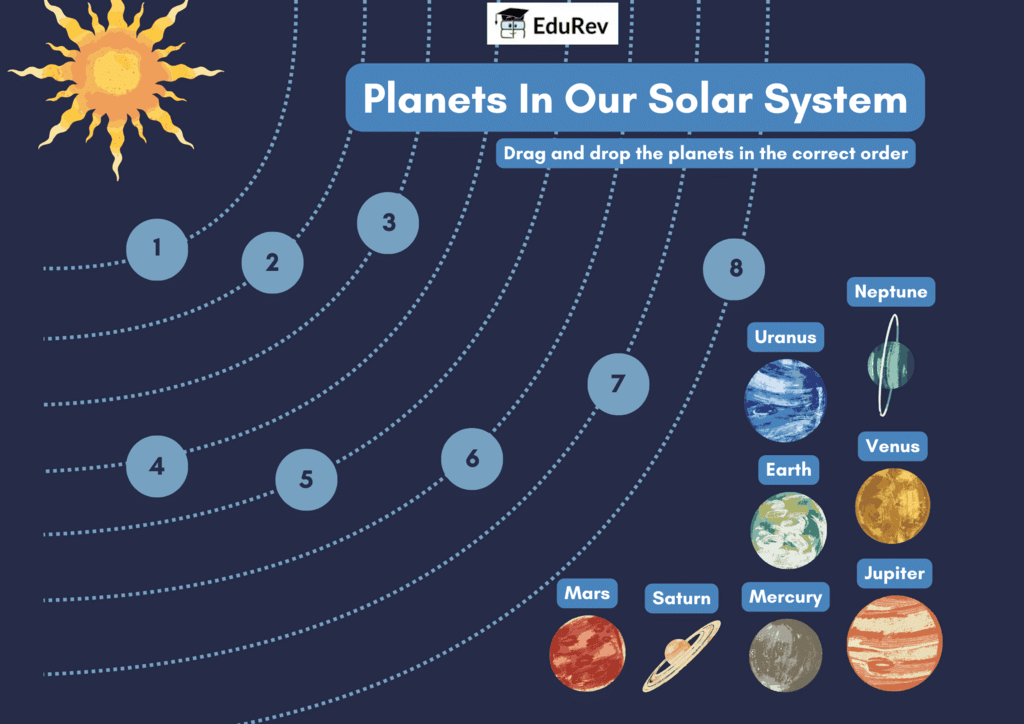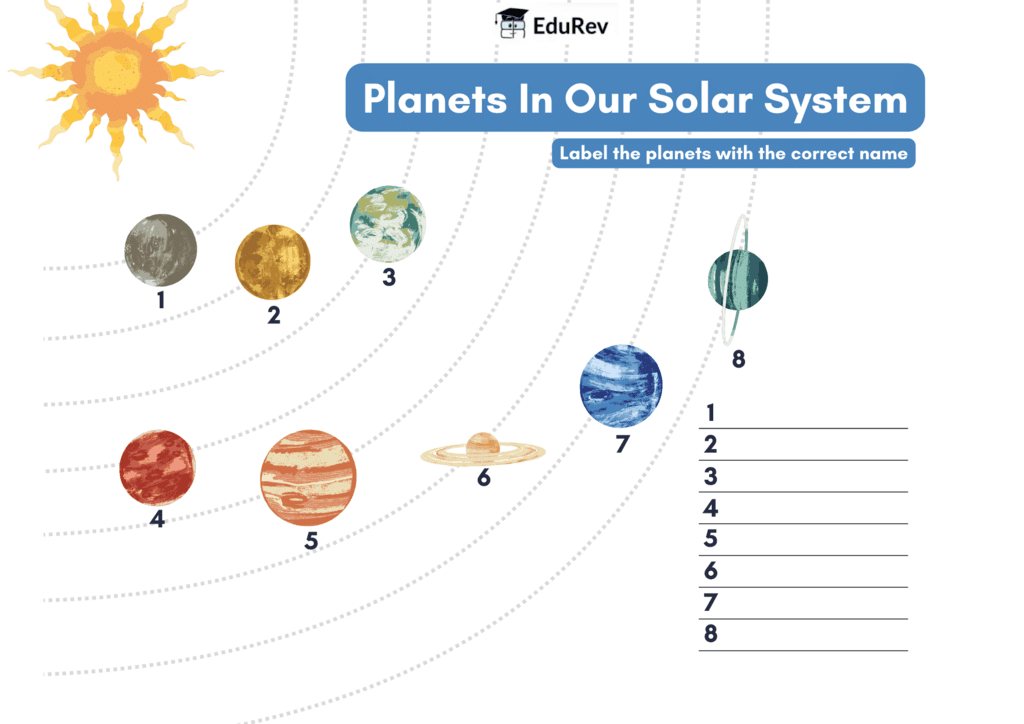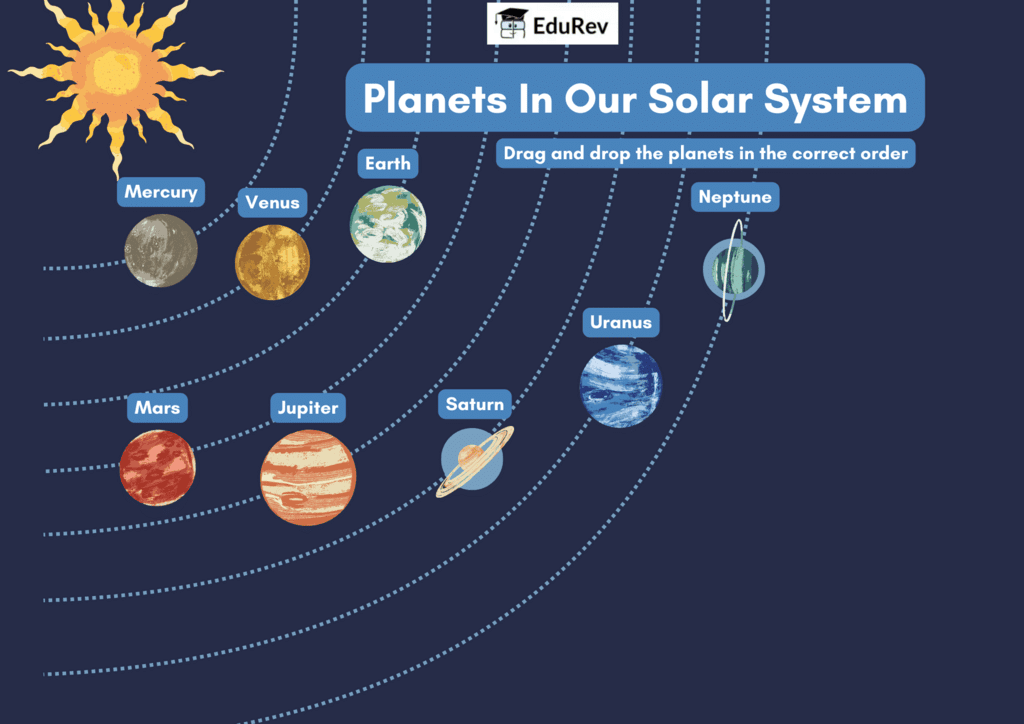Class 4 Exam > Class 4 Notes > Science Olympiad Class 4 > Printable Worksheet: The Solar System
Printable Worksheet: The Solar System | Science Olympiad Class 4 PDF Download



The document Printable Worksheet: The Solar System | Science Olympiad Class 4 is a part of the Class 4 Course Science Olympiad Class 4.
All you need of Class 4 at this link: Class 4
|
52 videos|70 docs|53 tests
|
FAQs on Printable Worksheet: The Solar System - Science Olympiad Class 4
| 1. What are the main components of the Solar System? |  |
Ans. The main components of the Solar System include the Sun, eight planets, their moons, dwarf planets, asteroids, comets, and meteoroids. The Sun is the central star that provides light and heat, while the planets are divided into two categories: terrestrial (rocky) planets like Mercury, Venus, Earth, and Mars, and gas giants like Jupiter, Saturn, Uranus, and Neptune.
| 2. How do planets orbit the Sun? |  |
Ans. Planets orbit the Sun due to the gravitational force exerted by the Sun. Each planet follows an elliptical path, with the Sun at one of the focal points of the ellipse. The gravitational pull keeps the planets in their orbits while their forward motion prevents them from falling into the Sun.
| 3. What is the difference between a planet and a dwarf planet? |  |
Ans. The main difference is that a planet has cleared its neighboring region of other debris, whereas a dwarf planet has not. For example, Pluto is classified as a dwarf planet because it shares its orbital zone with other objects in the Kuiper Belt, while Earth is a planet because it has cleared its orbit.
| 4. Why is Pluto no longer considered a planet? |  |
Ans. Pluto was reclassified as a dwarf planet in 2006 by the International Astronomical Union (IAU) because it did not meet all the criteria to be considered a full planet. Specifically, it has not cleared its orbit of other debris, which is one of the defining characteristics of a planet.
| 5. What are the characteristics of the gas giants in the Solar System? |  |
Ans. The gas giants, which include Jupiter, Saturn, Uranus, and Neptune, are characterized by their large size, thick atmospheres primarily composed of hydrogen and helium, and lack of a solid surface. They also have numerous moons and prominent ring systems, with Jupiter and Saturn being the most well-known for their extensive moon counts and bright rings.
Related Searches















